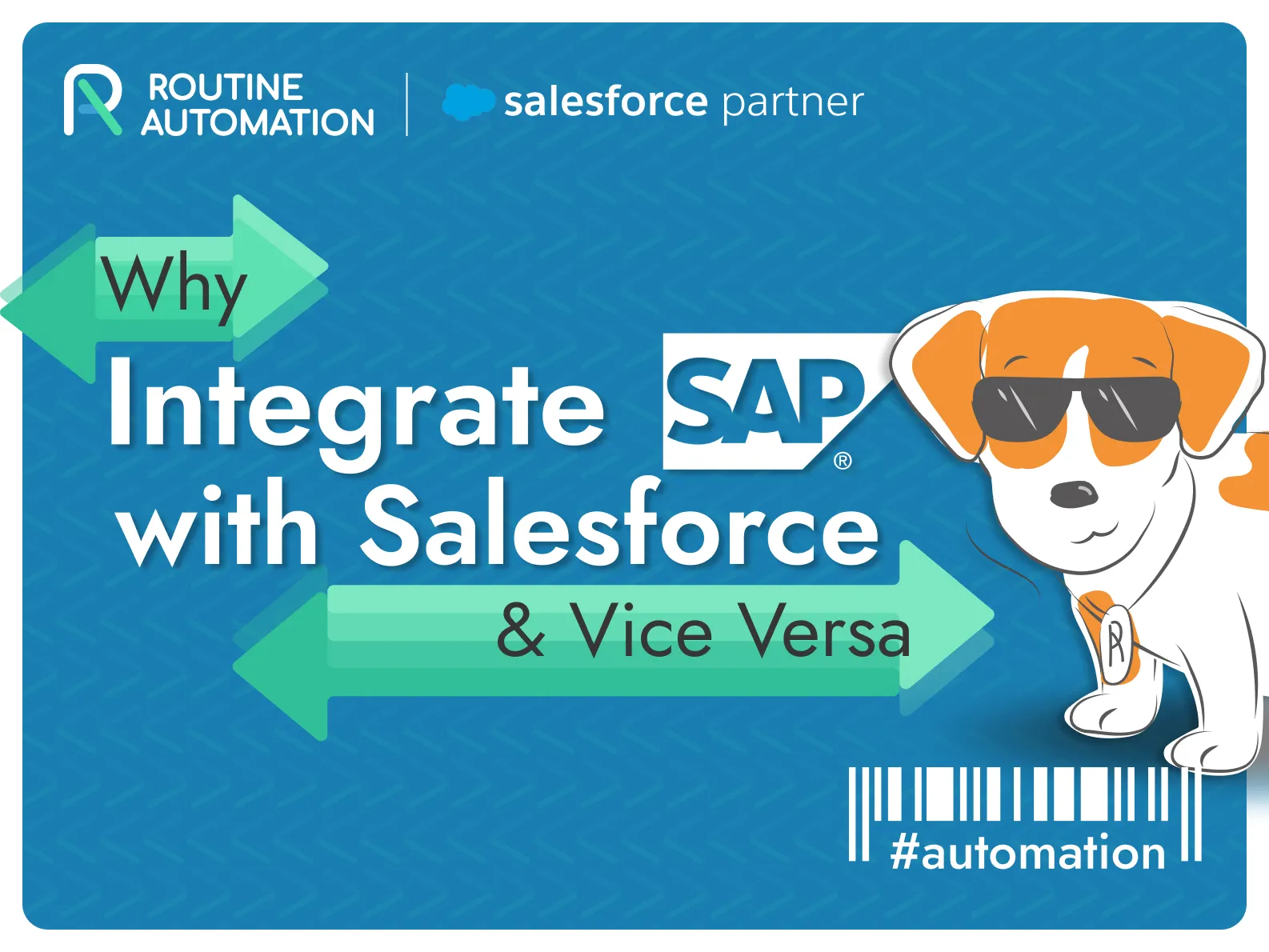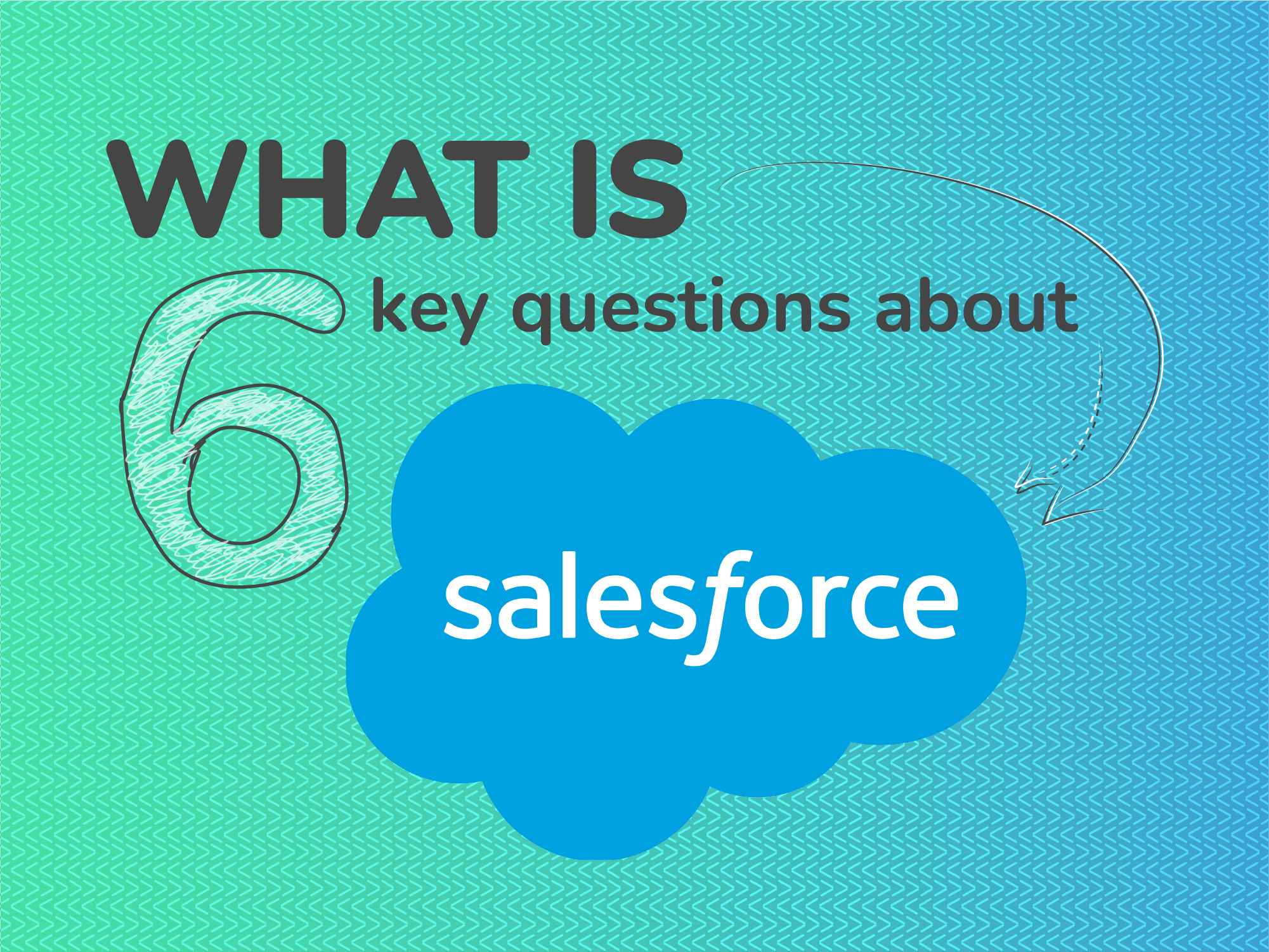How to Integrate SAP with Salesforce

Integrating SAP and Salesforce can streamline operations and data flow, but often comes with challenges like data silos and redundant data entry. This guide by Routine Automation Team Lead and Salesforce Architect Alexandr Guzarevich outlines a structured approach to SAP-Salesforce integration, offering solutions to common business hurdles. Integration of these systems can be a game-changer for your strategy through greater efficiency and real-time visibility across platforms.
Why Do Businesses Need SAP Salesforce Integration?

Modern businesses often struggle with fragmented data, inefficient processes, and disconnected customer experiences due to multiple isolated systems. Integrating SAP, the backbone of many organizations’ operations, with Salesforce, a powerful CRM platform, can address these challenges head-on:
With a well-executed SAP Salesforce integration strategy, businesses can transform their operations, gain a competitive edge, and drive growth by optimizing data utilization, process efficiency, and customer engagement. Partnering with an experienced team like ours can help you achieve this integration effortlessly, ensuring a smooth transition and immediate realization of the benefits it offers.
Check our case from our client in Logistics about synchronization from SAP to Salesforce to keep up-to-date information about the availability of goods.
The Challenge was that client operates Sales and Service Clouds to facilitate the activities of their sales and customer support departments. Complementing these cloud-based solutions, they rely on an on-premises SAP system to manage critical aspects of their operations, including warehouse inventory management and logistics oversight. Additionally, SAP plays a pivotal role in tracking inventory positions, ensuring efficient supply chain management. Furthermore, the client utilizes a distinct financial module within SAP for order placement and payment control, enhancing the overall efficiency of their financial processes.

Read more about the solution implemented by the RA team and the results our client has gained:
Benefits of the SAP Salesforce Integration
Integrating Salesforce with SAP can propel your business to new heights, unlocking a myriad of benefits that drive operational excellence, customer centricity, and sustainable growth:
By capitalizing on these benefits, your business can gain a significant competitive advantage, streamline operations, strengthen customer relationships, and unlock new growth opportunities. Partner with our experienced team to seamlessly navigate the integration process and realize value from day one.

Keen on integrating useful apps into Salesforce with our guidance?
SAP and Salesforce Integration Challenges

While integrating SAP and Salesforce promises significant benefits, businesses may encounter several problems along the way. However, partnering with our experienced team can help you navigate these challenges seamlessly:
By leveraging our expertise, you can overcome the challenges of SAP-Salesforce integration and unlock the full potential of this powerful technology synergy, driving operational excellence, customer satisfaction, and business growth.
How to Integrate SAP with Salesforce: Steps for engineers & business analysts

Below we provide a systematic approach and concrete steps for planning, executing, and managing the integration process.
Step 1: Define objectives and scope
Clearly outline what you want to achieve with the integration, including which processes and data should be integrated. Our team is processing the Salesforce Assessment on this step to define your business goals.
Step 2: Choose the integration pattern
Select the best method for your needs:
File-based: Transfer data through CSV or similar files, using FTP or email, for systems with less frequent updates.
API-based: Utilize APIs for real-time, on-demand data transfer, ideal for immediate updates and small data volumes.
Event-based: Set up system events to trigger data synchronization, ensuring real-time updates for critical business actions.
Batch: Schedule regular, bulk data transfers, suitable for heavy data loads and where immediate updates are not critical.
Step 3: Choose the integration pattern
Identify which data fields in SAP correspond to fields in Salesforce. This step is crucial for ensuring data consistency and accuracy.
Step 4: Develop and test
Whether using custom development or a pre-built connector, development should follow best practices in software engineering, including version control and comprehensive testing.
Step 5: Implement security protocols
Ensure the integration adheres to all relevant security standards and regulations to protect sensitive data.
Step 6: Deploy and monitor
After thorough testing, deploy the integration in a controlled manner, monitoring closely for any issues.
How to Solve Troubleshooting Common Integration Issues
Conclusion
Integrating SAP with Salesforce promises immense benefits but can present challenges along the way. With meticulous planning, proven solutions, and the guidance of our expert team, you can navigate these hurdles seamlessly and unlock strategic advantages.
Let’s embark on this transformative journey together, harnessing the power of seamless data flow, automated processes, and customer-centric operations. By turning integration challenges into opportunities, we can future-proof your business, enabling operational excellence and exceptional customer experiences.
With our expertise in SAP and Salesforce architecture, integration best practices, combined with your vision, this integration can become a catalyst for success. Embrace this opportunity, and together, we’ll unlock a future where integration drives efficiency, competitiveness, and growth.







